2025 Key Trends in Sports: Training & Competitive Advantage
Introduction – 2025 Trends in Sports
Staying ahead of the curve by understanding the trends in sports is essential where technology and training innovations significantly impact performance and success. So what are the 2025 sports trends?
Technology, Training & Competitive Advantage
The integration of technology, from wearable devices to advanced analytics, has revolutionized athlete preparation, making it a key factor in competitive advantage. These developments, as highlighted in insights like the steps to success with athlete monitoring, show the transformative effect of technology in sports.
The evolution towards more sophisticated, technology-driven sports practices was evident last year and referenced in our 2024 Sports Trends Report and the significant growth in the sports tech market. These trends underline the importance of adopting new technologies for maintaining and enhancing competitive advantage, setting the stage for the future of sports innovation.
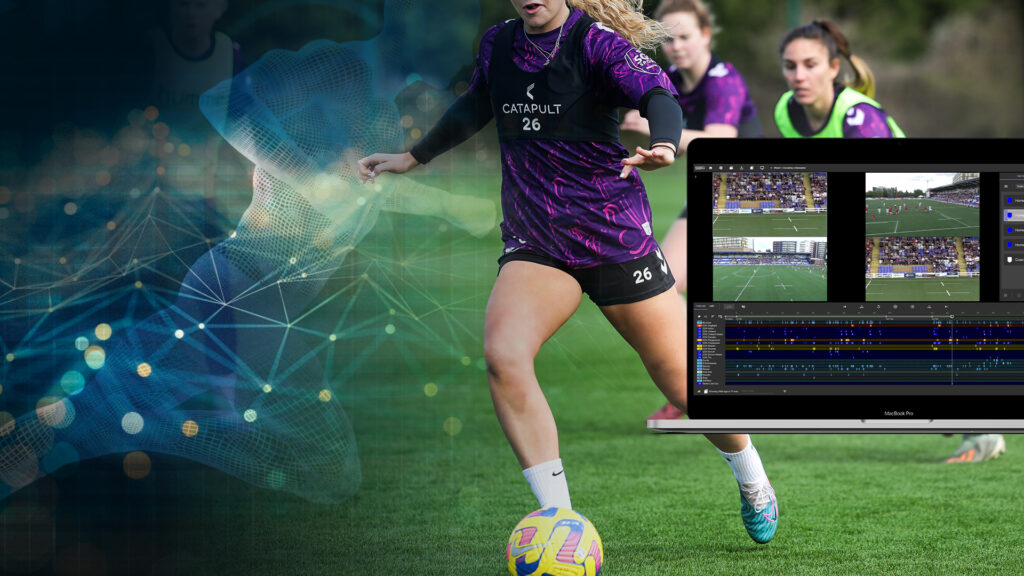
2025 Trends in Sports – Table of Contents
- Introduction – The Vital Role of Trends in Sports Evolution
- Wearable Technology in Training – The Rise of Athlete Monitoring (GPS Tracking/Vests)
- AI and Data Analytics for Performance Enhancement – Harnessing the Power of Artificial Intelligence
- Athlete Performance Tracking – Precision in Progress: Tracking Athlete Performance
- Virtual Reality (VR) Training – Immersive Training Experiences
- Women’s Sport – Empowering Excellence
- Customization and Personalization – Tailoring Success: Customized Approaches in Sports Training
- Conclusion- 2025 Trends in Sports
1. Wearable Technology in Training
Harnessing cutting-edge devices to optimize athletic performance and training.
The Rise of Athlete Monitoring (GPS Tracking/Vests) in 2025
Wearable technology, especially GPS-tracking vests and devices, has revolutionized sports training by providing detailed insights into athlete performance. Systems like the Catapult Vector S7/T7 offer precise data on movement, speed, and workload, enabling personalized training and injury prevention strategies.

These tools allow for the analysis of performance trends and the customization of training to meet each athlete’s needs. They’re invaluable across various sports settings, ensuring accurate performance tracking both indoors and outdoors.
Discover the advancements in athlete monitoring and their impact on sports at Catapult’s Vector series, showcasing how technology enhances training precision and athlete performance.
2. 2025, the use of AI and Data Analytics for Performance Enhancement
Empowering sports with smart insights for superior performance and injury prevention.
Harnessing the Power of Artificial Intelligence in 2025
The integration of Artificial Intelligence (AI) and data analytics into sports is revolutionizing training development and injury prevention. These technologies offer personalized insights into athlete performance, enabling precise adjustments to training regimes for enhanced performance and reduced injury risk.
AI-driven analytics are crucial for interpreting performance data, and revealing patterns and insights through advanced algorithms and machine learning. This allows for informed decisions on training and recovery, tailored to each athlete’s needs (Discover more about AI and sports analytics).
AI’s predictive power is a game-changer in preventing injuries and identifying risk factors by analyzing performance data. This enables coaches to adjust training proactively, keeping athletes at peak performance.
In Motorsports, advanced analytics provide critical insights into performance and strategy, showcasing the potential to enhance decision-making across all sports. AI and data analytics are pivotal in personalized athlete development, propelling sports into a new era of performance optimization.
3. Athlete Performance Tracking in 2025
Innovative tools delivering real-time insights into athlete performance and development.
Precision in Progress: Tracking Athlete Performance
The evolution of sports has been significantly influenced by the development of advanced tracking tools, which provide detailed insights into an athlete’s performance. These technologies, including GPS devices and video analysis software, have become critical for evaluating physical and tactical aspects of performance.
These tools allow for the analysis of movement, speed, and workload, aiding in the customization of training programs to enhance performance and reduce injury risks. Video analysis has proven particularly effective for reviewing and improving tactical decisions and movements.
Catapult‘s innovative solutions integrate data and video for comprehensive performance insights, supporting a data-driven approach to athlete development and management. This advancement in athlete performance tracking is transforming sports science, enabling more effective training and injury prevention strategies.
4. Virtual Reality (VR) Training
How Immersive technology revolutionises sports training through realistic simulation environments in 2025.
2025, the year of Immersive Training Experiences
Virtual Reality (VR) in sports training introduces immersive simulations for risk-free, realistic practice of competitive scenarios. This method enhances skill acquisition, and strategic planning, and contributes significantly to injury prevention and recovery. 2024, kicked this sports trend off. Hear from Jo Clubb:
In motorsports and beyond, VR allows athletes to practice in environments that mimic real-world conditions, from race tracks to sports fields, improving mental preparation and reaction times. VR’s controlled settings are also ideal for injury rehabilitation, enabling athletes to maintain skills without physical strain.
Moreover, VR’s immersive nature boosts mental resilience and focus, vital for performing under pressure. As VR technology advances, its role in sports training expands, promising new levels of performance enhancement and skill development.
5. Women’s Sport in 2025
2023 was a landmark year showcasing unprecedented achievements and growth in women’s sports. 2024 saw continued momentum, and this sports trend will continue throughout 2025.
2025, Empowering Women’s Excellence
2024 was a landmark year for women’s sports, marked by unprecedented achievements and significant advancements in equality and visibility. Women athletes worldwide broke records and defied norms, showcasing their talent and resilience. 2025 will be no different with the Women’s Cricket World Cup taking place in May, the UEFA Women’s Euros in June and July, followed by the Women’s Rugby World Cup in September.
The growth in women’s sports is fueled by stronger partnerships and increasing recognition of their value, leading to more resources and opportunities for female athletes. These developments have led to performance levels reaching new heights across various sports disciplines.
This progress in women’s sports has also had a significant societal impact, fostering empowerment and challenging stereotypes, setting a foundation for future growth. With ongoing support, the potential for women in sports is boundless, promising continued advancements and inspiration.
6. Customization and Personalization Throughout 2025
Elevating athlete performance through tailored training programs and individualized strategies.
Tailoring Success: Customized Approaches in Sports Training
The move towards customized and personalized training in sports marks a significant evolution in athlete preparation. This approach focuses on the unique attributes of each athlete, offering tailored programs that enhance performance and outcomes.
Customized training considers an athlete’s strengths, weaknesses, and goals, ensuring training is precisely targeted to maximize potential. This personalized approach also incorporates nutritional and mental conditioning advice, addressing the holistic needs of the athlete to optimize overall well-being and performance.
Technological advancements, such as wearable devices and data analytics, are key to enabling this level of customization. They provide detailed insights that inform personalized training strategies, allowing for adjustments that are closely aligned with an athlete’s current condition and needs.
This trend also recognizes the diversity of athletes, creating inclusive and adaptable programs that cater to a wide range of needs and promote equity in sports training. As technology and understanding of human performance advance, personalized training is set to redefine athlete development, enhancing both performance and career longevity.
2025 Trends in Sport Conclusion
The future of sports in 2024 is shaped by key trends in wearable technology, AI, performance tracking, VR training, the rise of women’s sports, and personalized training. These developments are driving a more nuanced approach to athlete development and performance optimization.
Wearable tech and AI are refining how we monitor and enhance training, offering insights for more effective recovery and injury prevention. VR offers immersive environments for mental and strategic training, while the growth in women’s sports highlights broader achievements and opportunities.
The move towards personalized training programs is crucial for addressing individual athlete needs, and promoting healthier, longer careers. Embracing these trends is vital for anyone in the sports field looking to maintain a competitive edge and achieve success.
As technology and personalization play larger roles in sports, staying adaptable and informed is key. Those who integrate these advancements into their training strategies are poised to lead in the evolving world of sports.
Sports Industry Trends Across The Years: 2024 to 2019
2024 Sports Trends & Predictions
Download the Report: 2024 Sports Trends & Predictions
Welcome to Catapult’s inaugural 2024 Sports Trends and Predictions Report. With over 4,000 professional sports customers worldwide, Catapult is uniquely positioned to gain firsthand insights into the trends that will shape the future of sports.
We recently surveyed over 700 global sports industry experts ranging from sports scientists, academic researchers, video analysts, and coaches, across multiple sports in over 80 countries. The interaction of ideas from sports such as football, American football, basketball, ice hockey, rugby, and motorsport has been particularly valuable. This cross-pollination of thought and experience has played a crucial role in shaping our trend forecasts for 2024.
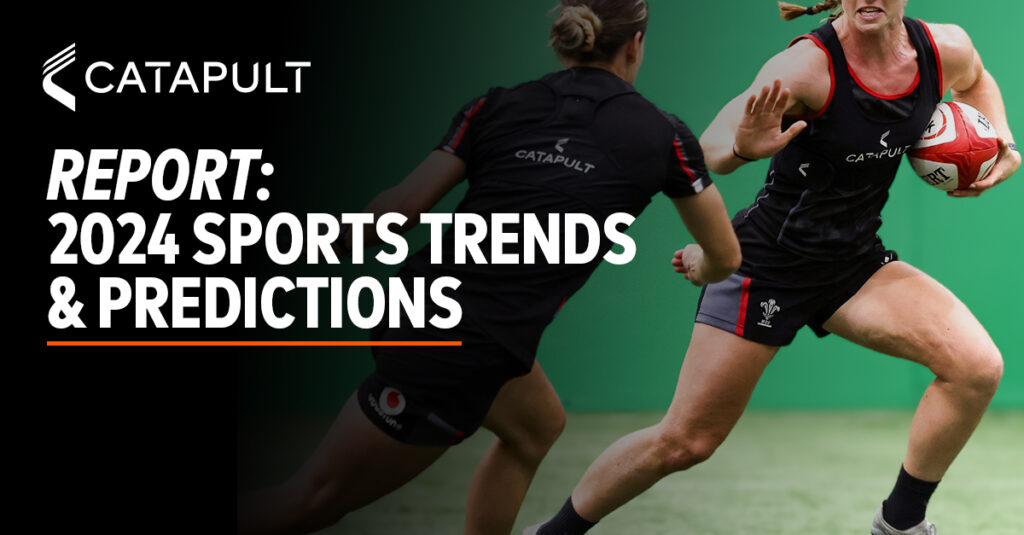
This report summarizes the findings from this survey and provides a comprehensive overview of the 2024 sports trends set to shape the future of technology use. These trends include:
- Increased use of prescriptive analytics and Artificial Intelligence (AI)
- Growth of technology use in women’s sports
- Improvements in athlete injury recovery protocols
- Increased use of technology at all levels, from professional to youth
- Integration of wearable data into video analysis
- Focus on personalized/individualized training programs
Our intent in publishing this report is to share insights that are shaping our industry worldwide.
We hope you find it as fascinating and inspiring as we do.
Watch Our Expert Panel Discussion
Our “2024 Sports Trends” webinar, featuring a panel of specialists across various sports, explores key topics like AI, athlete wellness, and fan engagement. Led by Jozef Baker, this discussion provides in-depth insights into this year’s sports tech landscape.

By watching this on-demand webinar, you can hear from leading voices in sports technology and gain a comprehensive understanding of the direction the industry is heading.
In No Particular Order, Here Are The 6 2024 Sports Trends Experts Predicted To Shape The Sports Technology Landscape:
1. Artificial Intelligence (AI) and Prescriptive Analytics
Trend Overview – AI & Prescription
The survey reveals a compelling consensus: 80% of respondents affirm that AI and machine learning, essential in driving prescriptive analytics, will be crucial in 2024. A notable 52% of these respondents foresee the most significant impact in the ability to adjust programs in real-time based on comprehensive data analysis.
Prescriptive analytics, the next evolution beyond predictive training, is set to revolutionize sports training by not only forecasting outcomes but also recommending concrete actions to achieve desired performance goals.
Sports Technology AI Use Case
Imagine a football team gearing up for a tournament. Prescriptive analytics tools would evaluate performance data to predict potential injuries and fatigue, but, prescribe specific training loads and recovery protocols for each player. Coaches can then implement these recommendations to ensure each athlete reaches their optimal performance state for the crucial matches ahead.
Why Is AI and Prescriptive Analytics Important?
The shift to prescriptive analytics in 2024 signifies a major leap in sports training, focusing on actionable insights and enhanced decision-making. With 52% of respondents highlighting the role of real-time data adjustments, sports practitioners can now rely on AI-driven prescriptive models to deliver targeted training programs, substantially reducing injury risks and elevating athletic performance.
This progression in analytics marks a transformative phase for coaches and sports scientists, offering the tools to process vast data sets instantly and recommend precise training adjustments. This immediacy in applying data insights directly translates to highly effective training strategies, tailored to the evolving needs of each athlete.
By significantly improving the accuracy and efficiency of training decisions, the incorporation of prescriptive analytics into sports training workflows signifies a shift from traditional reactive methods to a proactive, strategic approach. It heralds a new era of data-informed, actionable, and adaptive training methodologies that promise to raise the bar in athletic performance and strategic health management in the years to come.
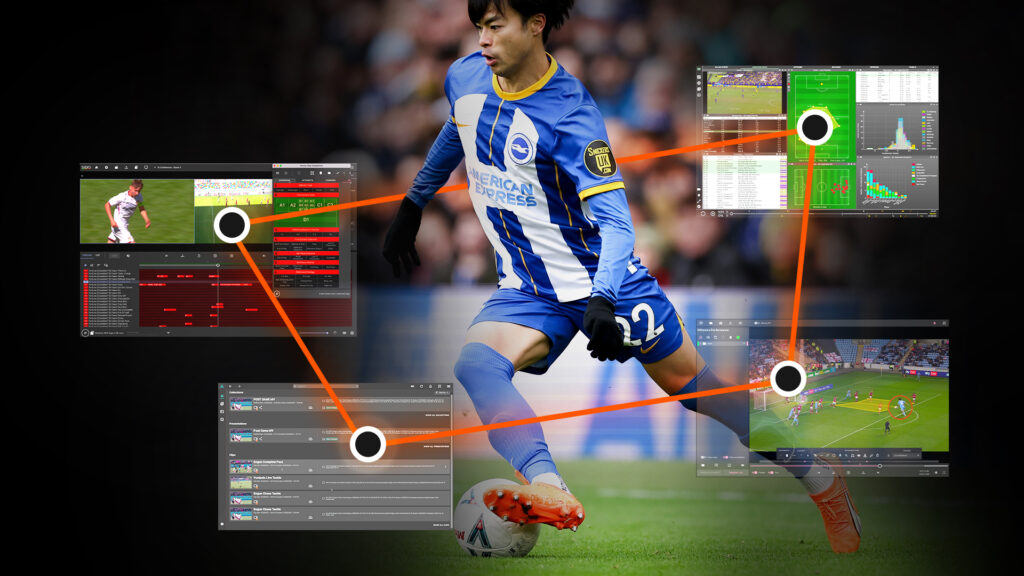
Further Reading and Resources
As the sports industry progresses into 2024, understanding the deep impact of prescriptive analytics is vital. It is anticipated that the application of AI in sports will streamline operations, enabling teams and athletes to optimize their performance through refined processes.
With that in mind, our webinar demonstrates the potential for a 95% reduction in time spent on analysis workflows. This time-saving is achieved by automating existing processes and streamlining training. It also enhances the entire operational efficiency of sports teams.
Learn about the advantages of workflow automation in sports training with our informative webinar.
2. Democratization of Technology
Trend Overview
In 2024, we’re anticipating a significant shift towards greater accessibility of sports technology, a sentiment echoed by 33% of survey respondents who see this as the most influential trend in the global sports industry. Wearables and video analysis tools are becoming more accessible, a game-changer for teams and athletes at all levels.
Democratized Tech Use Case
For semi-professional football clubs, enhanced access to technology like Catapult’s Vector devices and sophisticated video analysis tools is transformative. These resources allow clubs to gain high-level performance insights, equipping them to train, mitigate the risks of injuries, and develop strategies akin to elite teams.
A key benefit of using these technologies from the early stages of athletes’ careers is the accumulation of long-term performance data. This extended data collection provides a comprehensive benchmark for evaluating athletes’ progress and adapting training programs to their unique development needs. It also aids in understanding the impact of different training regimes on performance and health, leading to informed decisions that enhance career longevity and minimize injury risks.
In summary, the early adoption of these technologies in semi-professional environments sets the stage for sustained athlete development and long-term success.
Why Is The Democratization of Technology Important?
The trend towards accessible technology empowers sports practitioners to adopt more comprehensive and data-driven training and development approaches. They can now leverage precise tracking and analytics to tailor training and make informed decisions, regardless of their team’s level or financial capabilities.
In particular, performance analysis-based staff at smaller clubs stand to benefit immensely from this trend. Access to advanced video analysis tools allows for an unprecedented level of detail in performance insights, merging video data with wearable analytics to provide a holistic view of athlete performance.
Vector Core: Simplifying Load Management for All Teams
Vector Core exemplifies this trend towards accessibility. It simplifies load management, allowing seamless data sharing across different performance levels.
“The Vector Core solution has simplified our load management practices, increasing coach communication and helping our developing players reach First Team benchmarks.”Sigurdur Hoskuldsson, Assistant Coach at Valur Football Club
Matt Bairos, Chief Product Officer at Catapult, states, “Vector Core is designed to be intuitive and user-friendly, offering a game-changing solution for teams to enhance athlete performance and health.”
For more on how Vector Core exemplifies this trend by making advanced technology accessible, visit our Vector Core announcement.
3. Wearable and Video Integration
Trend Overview – Integrated Data + Video
In 2024, the trend towards integrating wearable technology with video analysis is anticipated to be a transformative force in sports performance analysis, with 20% of industry survey respondents recognizing its significant impact.
Moreover, 35% predict the emergence of new hybrid roles bridging Strength and Conditioning and Data Analysis, while 19% foresee real-time video insights becoming a substantial trend.
Use Case of Data + Video
In a professional football club setting, the utilization of wearable devices during training sessions to track key physiological and biomechanical data, alongside the use of video analysis tools for capturing tactical movements, represents a significant advancement in player performance analysis.
This integration of data streams provides coaches and analysts with a comprehensive view of each player’s performance. It allows them to correlate physical exertion with tactical maneuver on the field, which is crucial for tailoring training and recovery protocols to individual needs.
Additionally, the emergence of hybrid roles within clubs, bridging performance analysis and video analysis, further enhances the effectiveness of this approach. These hybrid professionals are equipped to interpret and synergize data from both wearables and video sources, providing a more cohesive and detailed understanding of player performance. This role is increasingly becoming a vital asset in clubs, ensuring that the wealth of data collected is translated into actionable insights for athlete development and team strategy.
Why Is Integrated Video and Data Important?
For sports practitioners, this trend heralds a new era of comprehensive athlete understanding. The ability to merge physical data with tactical video footage means an enriched, informed coaching strategy, allowing for a nuanced analysis of player performance that can influence critical decisions in high-stakes situations.
Video coordinators benefit from this integration by providing a narrative that combines physical data with visual analysis. This comprehensive perspective is crucial for detailed post-match reviews and future training planning, ensuring all aspects of performance are synergised.
“Adding context through video is crucial. Visualizing and understanding load differences leading up to injuries, for example, is vital. When sharing insights with coaches, adding game- or training-based context makes it much easier for them to comprehend the insights.”Elliott Axtell, Chelsea FC’s U23 Lead Athletic Development Coach, highlights the importance of this integration.
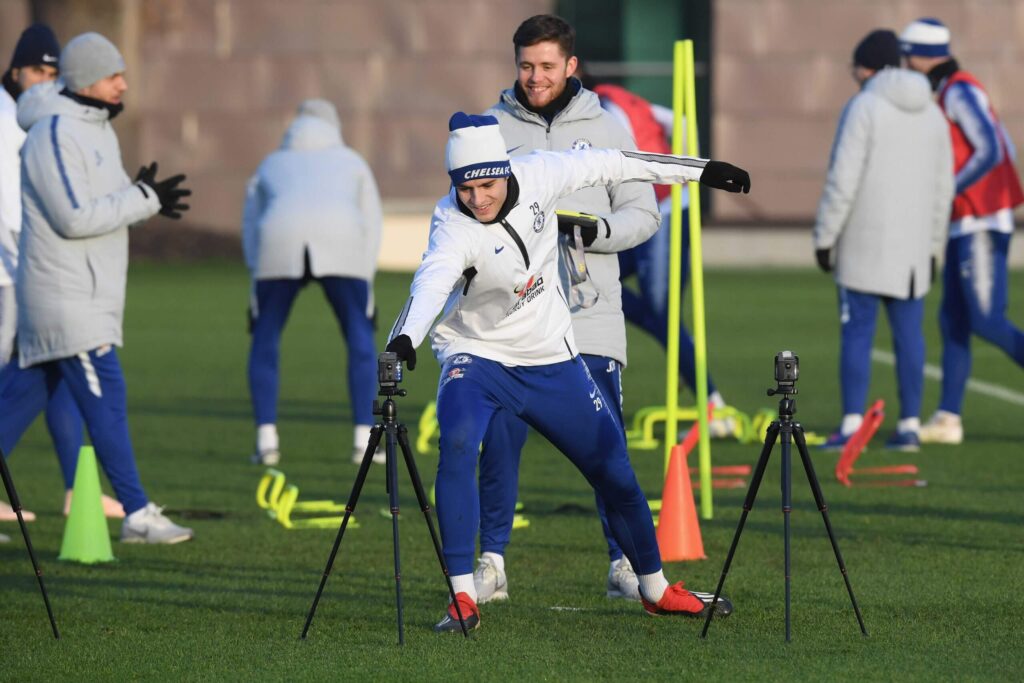
Further Reading and Resources
To see how this integration can transform team performance, read about Chelsea FC’s innovative application. Axtell’s insights offer a glimpse into how combining data with context can revolutionize performance analysis. Learn about Chelsea FC’s approach to integrating wearable data and video analysis.
4. Individualized Training
Trend Overview – Bespoke Training Practice
The approach towards personalized and individualized training programs is set to become more prevalent in 2024, with 13% of industry professionals identifying it as a pivotal trend. Utilizing advanced technology, coaches are expected to develop training regimens that meet the distinct requirements of each athlete, driven by sports-specific algorithms and data analytics.
Use Case of Individualized Training
The varying physical and technical demands in sports like rugby, ice hockey, football, and American football call for specialized training regimens. Technology facilitates the creation of tailored programs that cater to the unique needs of each position and player, such as goalkeepers in football who require a focus on reflexes over endurance.

Why Is Bespoke Sports Practice Important?
Sports practitioners can harness the power of data to design targeted development strategies for each athlete. This bespoke approach leads to more effective training, faster performance improvements, and a lower risk of injuries.
Video coordinators are integral to this personalized approach, providing visual analysis that, when integrated with data from wearable technology, offers a complete profile of an athlete’s strengths and areas needing development.
“Not unlike pitchers in baseball and their shoulder and elbow health programs, we got to manage goalies’ hip health. The new goaltender analytics has elevated all key stakeholders to be able to intervene and make sure that we’re managing that position, getting the most out of them with the least amount of strain on their bodies,”LA Kings’ Director of Strength and Performance Science, Matt Price
Further Reading and Resources
To delve deeper into the benefits of personalized training, examining Catapult’s work with Feyenoord and the LA Kings offers a practical perspective. These case studies illuminate the successful application of individualized training programs across various sports.
5. Growth of Technology In Women’s Sports
Trend Overview – Women’s Sports Growth
The year 2024 is poised to be a landmark year for the advancement of women’s sports, with an overwhelming 80% of industry professionals anticipating a larger role for sports analytics in this domain. Optimized training tailored specifically for female athletes, along with data-driven decision-making strategies, are identified as pivotal areas of impact for women’s sports.
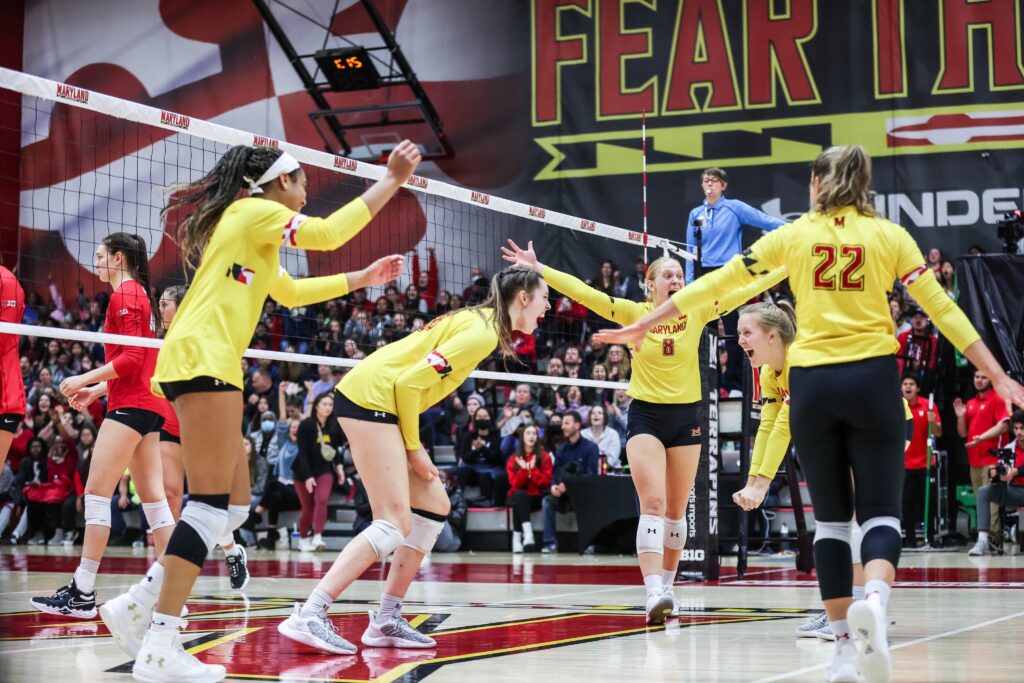
Growing Tech Application in Women’s Sports: Use Case
Analytics in women’s football is a prime example of this trend’s increased impact. Here, data analysis tools can offer comprehensive insights into performance, informing more effective, physiologically and tactically appropriate training and gameplay strategies. This can significantly elevate the performance standard and broaden the visibility of women’s teams.
A similar trend is observed in NCAA Volleyball, where increased investment in analytics and technology, like Catapult’s Vector T7 units, is enhancing athlete development.
“Our holistic student-athlete development model at Pitt is greatly supported by the objective information gathered from training sessions. These insights aid our sports performance team in crucial discussions related to health, wellness, and return-to-play strategies.”Stephanie Mock, Assistant Athletic Director for Sports Performance at Pitt Panthers, highlights the importance of this investment.

Why This Is Important for Women’s Sports?
For those working in women’s sports, the integration of analytics facilitates an enriched environment for athlete development. Coaches can implement data-informed training regimes, promoting well-being and honing tactics.
In particular, video coordinators are set to benefit from the wealth of data now available, enabling them to provide detailed performance insights and contribute to the strategic planning that is vital for developing a competitive edge.
Further Reading and Resources
A thorough understanding of the transformative effect of analytics on women’s sports can be gleaned from collaborative initiatives such as the Loughborough x West Ham partnership.

“We are thrilled to be leading on such a vital piece of research as women’s football continues to go from strength to strength. By collaborating alongside campus partners, West Ham United Women, Catapult Sports, and Kukri, we have collectively brought together some of the best minds in sports performance to deliver a research project that will yield impactful results.”Rich Ellis, Head of Commercial Partnerships and Sports Facilities at Loughborough University
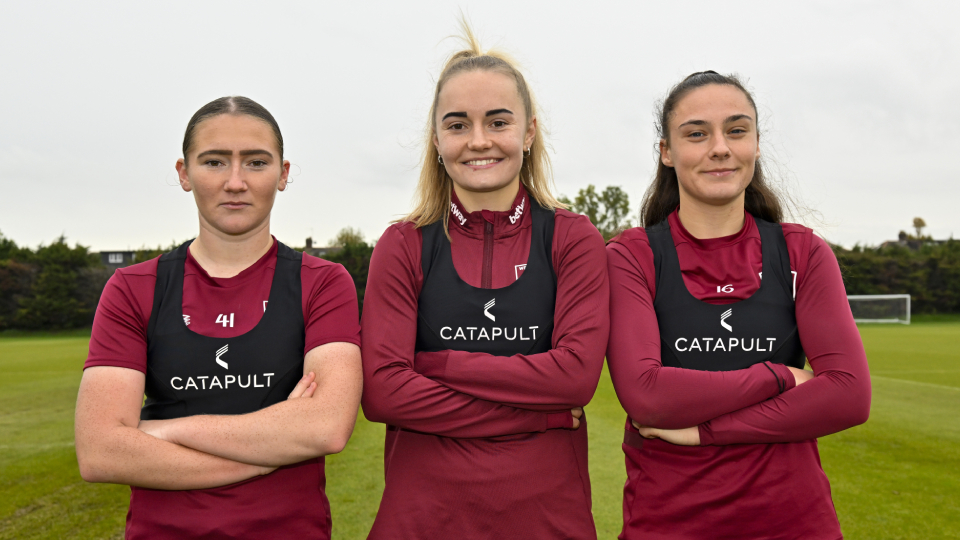
6. Return to Play
In 2024, the sports industry is set to prioritize strategic Return to Play (RTP) protocols, with a focus on leveraging real-time data to optimize the RTP process. Industry professionals underscore the importance of customizing rehabilitation programs using data-driven insights, aiming to reduce the risk of re-injury and ensure athletes return to competition safely and effectively.
Use Case – RTP
Athletes in high-contact sports, such as rugby, ice hockey, and American football, require meticulous monitoring during their injury recovery. Wearable technology plays a crucial role by providing real-time data on an athlete’s recovery progress, which is essential for a phased and informed reintroduction to training. For instance, monitoring a rugby player’s rehabilitation from a knee injury via wearable tech allows for a calculated, step-by-step return to play, mitigating the risk of re-injury.
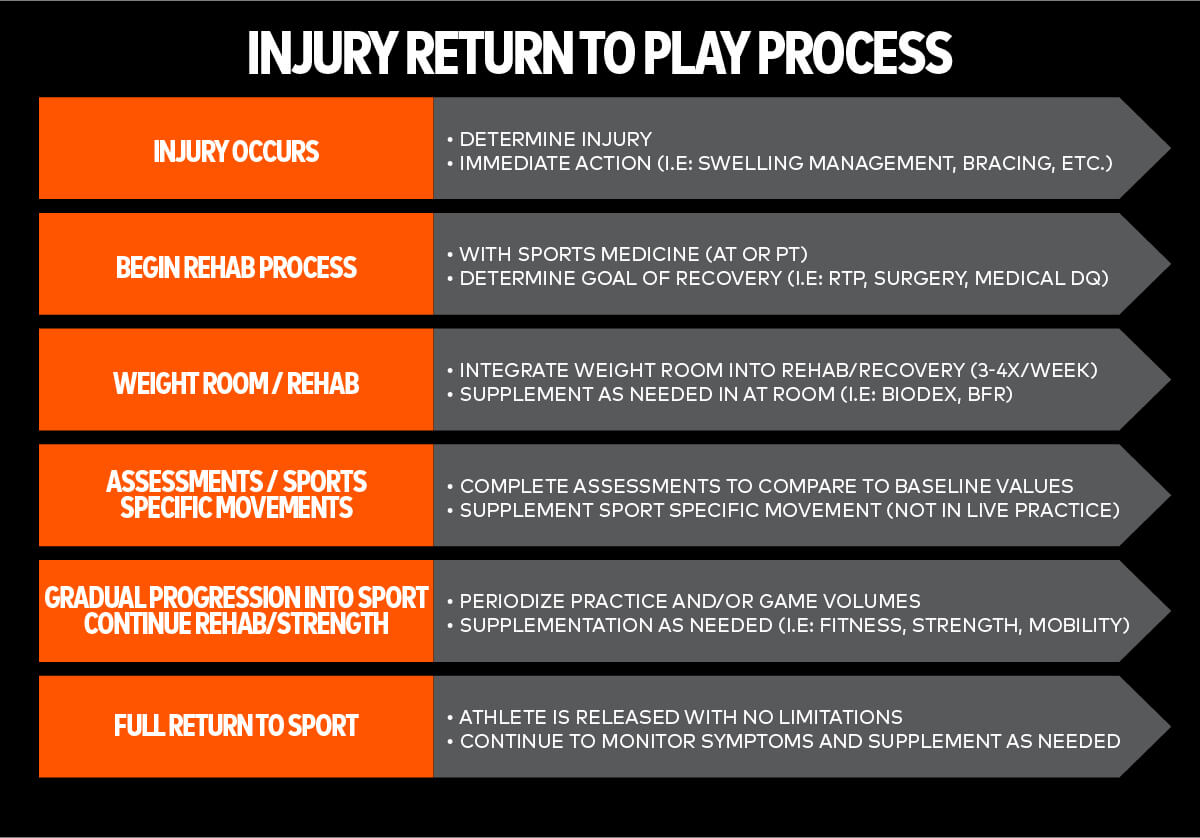
Why Is Return To Play Important?
For sports practitioners and medical teams, the trend towards data-driven RTP means a shift towards more informed and strategic rehabilitation planning. Real-time data integration is crucial, With 14% of survey participants expecting to see more focused approaches to improve and create faster return-to-play plans. This approach enables a deeper comprehension of an athlete’s recovery trajectory, essential for custom-tailored rehabilitation protocols.
Video analysis personnel will find the integration of wearable data with video footage to be a game-changer, offering a comprehensive view of an athlete’s recovery and enabling precise assessment of their readiness to return to play.
Further Resources
To effectively implement RTP strategies, practitioners can utilize the eBook “Building Effective Return to Training Programs: Planning, Delivery, Evaluation,” which offers practical guidelines for data-driven RTP protocols. Additionally, ‘Science for Sport’ provides extensive analysis on load management, essential for injury prevention and safe RTP in youth sports settings. These resources are crucial for organizations aiming to adopt advanced RTP protocols.
Download the eBook on Building Effective RTP Programs and explore load management strategies at Science for Sport.
Conclusion of the 2024 Sports Trends Forecast
The trends we’ve outlined reflect a sports technology landscape that is evolving rapidly, pivoting towards more data-driven, inclusive, and athlete-centric approaches. These trends embody the sports industry’s collective ambition to push the boundaries of performance and innovation.
As 2024 unfolds, the insights gleaned from our roundtable discussions will continue to enrich our understanding of these trends. To further engage with these developments and join the ongoing dialogue, we invite you to view our roundtable discussion.

→ Click here to access our 2024 Sports Trends Roundtable, and be part of the conversation that is shaping the future of sports performance technology.
2023 Sports Industry Trends: The Year of High-Tech Performance – 5 Trends to Keep Your Eye On
The sports performance and technology landscape is evolving rapidly, and current trends in the sports industry show that advanced technology is playing a crucial role in reshaping how teams, athletes, and fans engage with sports. From wearable technology to predictive analytics, these innovations are driving performance and offering new ways to optimize both player health and fan engagement.
At Catapult, we are passionate about staying at the forefront of these sports industry trends to help teams and athletes push the boundaries of performance. Below, we explore some of the most impactful trends in 2023 and how they are shaping the future of sports.
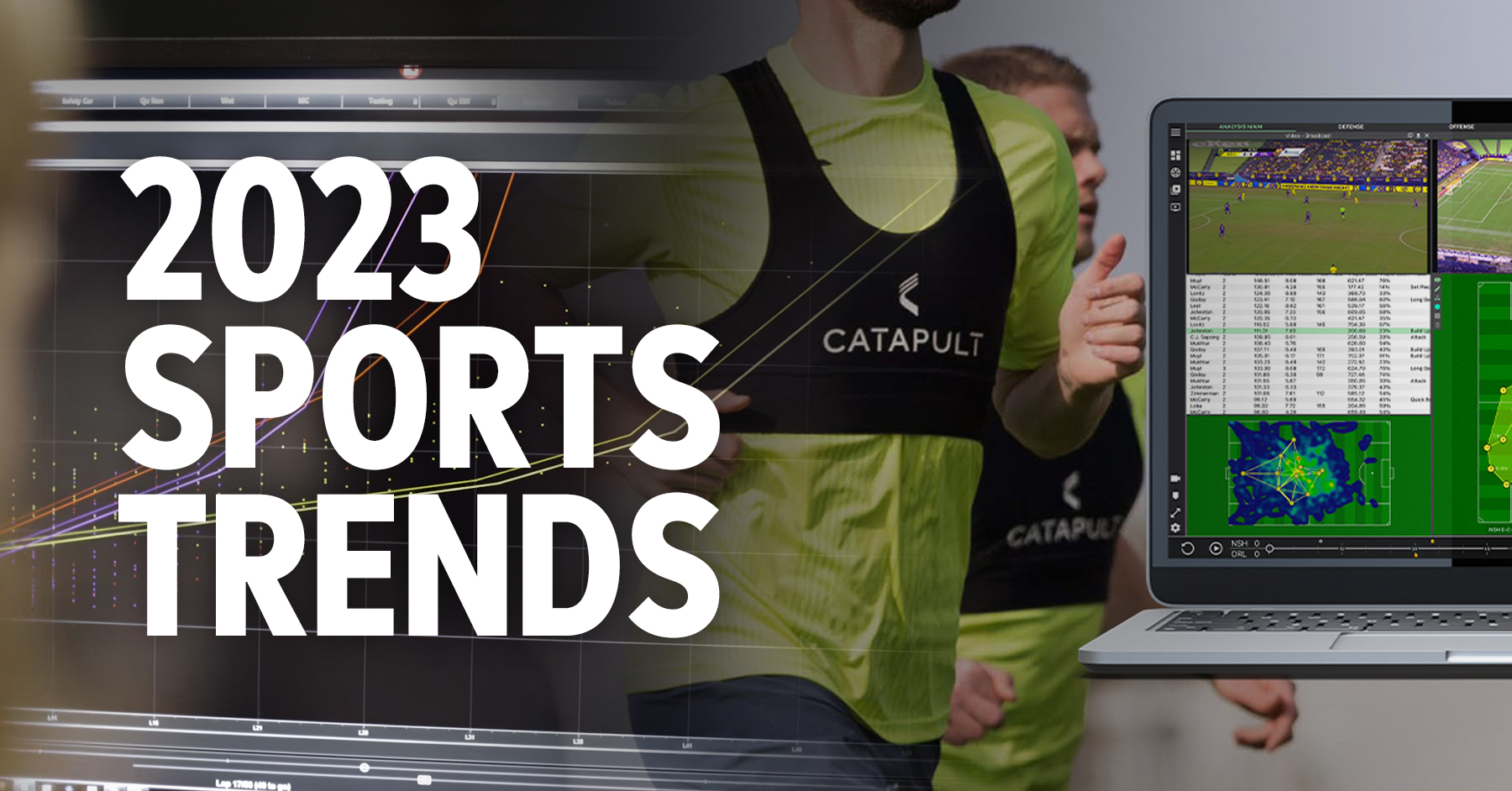
In doing so, we asked members of our customer success team to share what trends to keep an eye on in 2023. In this blog, we take a closer look at some of the key trends and innovations in this industry and explore how they are helping athletes push the limits of performance.
1. Adoption of wearable technology
One of the most prominent sports industry trends is the widespread use of wearable technology. Devices like fitness trackers and smartwatches allow athletes to monitor vital metrics such as heart rate, distance traveled, and speed in real time. According to Chris Polley, Catapult’s VP of Customer Success, “This real-time feedback helps athletes and coaches make data-driven decisions to improve performance and reduce injury risk.”
This technology can help athletes to track their heart rate, distance travelled, and other metrics, and can be used to provide valuable insights into their training and performance.
Wearable tech is becoming standard practice across various sports. At the 2022 FIFA World Cup, 18 of the 32 participating teams, including finalists Argentina and France, used Catapult technology to monitor and optimize player performance, showcasing the power of wearable devices in the most high-profile sporting events. This adoption reflects the growing emphasis on real-time performance data as a key part of current trends in the sports industry.
As teams from five confederations competed at the FIFA World Cup 2022 in Qatar, we hosted a webinar titled: ‘Wales at the 2022 World Cup: Preparation, Expectations, Challenges’. This webinar featured Tony Strudwick, Football Association of Wales’ Head of Performance, who provided insights into an international team’s sports performance set-up, and Wales’ approach to major tournaments. To watch this webinar, click here.
2. Building more contextualised insights by combining data and video
Another area where sports technology is having a significant impact is in the analysis of sports data. With the help of advanced algorithms and machine learning, teams and coaches can now analyze vast amounts of data in real-time to gain insights into player performance and strategy.
The combination of performance data and video analysis is another trend transforming how teams evaluate their performance. Steve Collins, Catapult’s Customer Success Specialist, highlights how “teams can now sync performance data from wearable devices with video footage for a complete picture of player movement and strategy.” This integration allows teams to assess every moment of a game, offering contextual insights that enhance decision-making and performance optimization.
As part of this current trend in the sports industry, Catapult’s integration of Vector wearable data with MatchTracker video analysis is helping teams analyze physical metrics alongside in-game video, providing performance staff with unmatched depth in their analysis. Learn more:
–> Try Performance Data + Video for free, click here to request a demo.
“Now, every physical metric is connected to video footage, viewable at every game moment. Performance staff, video coordinators, and other team personnel can gain a new level of analytical insight with Catapult’s new integrated performance data and video analysis solution,” said Collins.
3. Predictive analysis improving decision making
Predictive analysis is one of the cutting-edge sports industry trends in 2023. We will see the increased use of predictive analysis software, helping teams and coaches make better decisions. This software uses data and algorithms to analyze past performance and make predictions about future outcomes. For example, a team might use predictive analysis to determine the best strategy for a game or to identify potential players who could be a good fit for the team.
Additionally, predictive analysis can help teams monitor the health and performance of their players, allowing them to make informed decisions about training and playing time. Overall, the use of predictive analysis in sports is helping teams to become more data-driven and make more informed decisions.
Formula 1 teams are very much at the forefront of this trend towards using predictive analysis software. Discover how Mercedes AMG Petronas Motorsport uses Racewatch Race Analysis, a software for pre- and post-race strategy.
By leveraging predictive analysis, teams can become more proactive, tailoring strategies to maximize success and minimize risks, underscoring the critical role of data in current trends in the sports industry.
4. Advanced analytics on broadcast TV and streaming
One of the most exciting current trends in the sports industry is the use of advanced analytics in sports broadcasting. Broadcasters are now able to use advanced technology to provide viewers with a wealth of information and analysis during a game. This includes real-time statistics, player tracking data, and predictive models that can help to inform viewers and enhance their understanding of the game.
Catapult Customer Success Manager, Gordon Rennie, explains more here.
Additionally, broadcasters are using data and analytics to create more engaging and interactive experiences for viewers, such as interactive graphics and virtual reality simulations. Overall, the use of data and analytics in sports broadcasts is helping to improve the viewing experience for fans.
5. Virtual reality: Spectator experience and athlete’s practice mimicking real-life performance
Virtual reality (VR) and augmented reality (AR) are revolutionizing both the athlete and spectator experience, marking them as key sports industry trends. For example, virtual reality (VR) and augmented reality (AR) are being used to bring sports fans closer to the action. VR headsets can transport fans to the stadium or arena, allowing them to feel like they are part of the game. AR technology, on the other hand, can be used to display real-time stats and other information on top of the live action, providing fans with an even more immersive experience.
Athletes have also been getting their hands on VR and AR technology. In doing so, they have been able to mimic real-time performance in a safe environment. The technology provides an effective learning experience by training the athletes in the most realistic way possible, without the situation happening in real life. This is especially effective for athletes in contact sports like American football and rugby where overexposure to tackles and hits can cause drastic injuries.
The current trends in the sports industry show that technology is reshaping how athletes train, teams strategize, and fans engage with sports. From wearable devices to predictive analysis, the innovations highlighted in this section are defining the future of sports performance. By staying at the forefront of these sports industry trends, organizations can ensure they remain competitive and push the limits of athletic performance in 2023 and beyond.
To delve deeper into the sports performance and technology industry, read last year’s sports trends by clicking here. Did the 2022 trends come true? How have they evolved today?
Alternatively, if you are ready to discover the right technology for your sports team in 2023, click here to see what technology and Customer Success support is on offer with Catapult.
5 Sports Trends to Watch in 2022
With the return of many of the world’s most exciting sports competitions in 2021, the industry witnessed wider adoption of technology amongst organizations, clubs, coaches and athletes. As we transition into the new year, Catapult reached out to esteemed University of Birmingham Sport Sciences Professor, Dr Tom Browlee, to outline the 5 trends we will see in 2022:
1. Increased use of data in sports broadcasting
Data is already being used to supplement reporting by sports broadcasters, but we still have yet to see all its use cases play out. In track and field, we see throwing and jumping distances superimposed on our screens; in the NFL we see the required yardages; and most recently, we’ve seen the live speed of F1 cars and the pattern of penalty kicks by rugby players.
Broadcasters using data can give viewers a bigger picture of what’s going on during games. The sports and leagues that haven’t been benefiting from this feature will start to invest in it more to keep fans engaged, especially with the possibility that stadia will not be filled to capacity due to pandemic measures. However, with more data comes more responsibility, so privacy concerns will remain paramount in business decisions around data use in broadcasting.
2. Virtual reality becomes critical coaching tool
Virtual reality has continued to creep into more aspects of our lives, and sport is no exception. As the technology advances and more use cases emerge, the sports industry will see more investment in VR. For example, the company Rezzil in the UK is using VR to provide hyper-realistic skills training for soccer players and other athletes, allowing for tactical awareness to be honed from anywhere.
VR could also allow real game events to be replicated so coaches can adjust plays based on reality. VR will also become a more common solution for players recovering from injury. For fans, the combination of drone camera capabilities and VR means they may be able to enjoy the best seat in the stadium without ever leaving their couches! This is another trend that will see further tailwinds if social distancing or lockdown measures are imposed again.
3. Wearables simplify data & predict performance
We will continue to see new metrics being added to the list of data points wearables can provide in 2022. This will include greater use of live blood glucose monitoring, which will aid fuelling and adaptation strategies, heart rate variability to aid recovery, and subjective measures to assess mood.
What is going to be especially novel this year is the continued aggregation of this data. Apps will begin to bring these metrics together and likely lead to a single score as a whole for athletes. This will also include sleep metrics, which will continue to improve as we become able to measure them in less invasive ways. In professional sports, this will provide coaches with more data than ever to understand the load an athlete has experienced, prescribe what should be done next as a result (should they be training or recovering), and the holy grail – predicting what might happen next.
This data could also be used to provide younger players with benchmarks to aim for when considering their own long-term athlete development. From a commercial and fan engagement point of view, if teams and leagues decide they are comfortable sharing some of this data publicly it will be another engagement tool as fans see how they measure up to their heroes on the pitch.
This topic was discussed widely at a recent conference: PAC 22. Discover what insights attendees walked away with by clicking here. Now, there is a greater appreciation for the work best practice performance analysts do, the different methods they apply, and how they use data and video to impact individual and team performance.
4. Concussion awareness impacts all sports
Safety will continue to be at the top of the agenda for all teams and governing bodies–not just with regard to managing the spread of illnesses, but also with preventing concussions.
This year we will see further results from a number of high-profile research studies looking into the incidence and implications of concussion in sports from American football, to football, rugby, AFL, and others. There is mounting evidence that head impacts leading to concussive events (the brain being shaken inside the skull) or many smaller impacts leading to an accumulation of sub-concussive events has extremely serious long-term effects.
The number of athletes having to retire following such events or retired athletes reporting dementia-like symptoms is on the rise. As a result, the use of wearable technologies, such as instrumented mouthguards from companies like HITIQ, enable us to better understand when such impacts have occurred and how severe they have been.
This will hopefully lead to a decline in concussions in the long term and ensure that even the smallest-looking incidences are not overlooked. This will feed into policy shifts around return-to-play protocols to ensure no athletes are coming back to potentially dangerous situations sooner than they should. As a whole, increased awareness and advances in athlete monitoring will enable players to be far better protected and stay healthy longer.
5. Cold showers are here to stay
One thing that will definitely not go away in 2022 is the influence of sports stars and celebrities on our daily habits. Throw in the rise of influencers, and it seems we’re being bombarded with ways to live better from all angles, whether it’s supplements, apps, or the latest sports tech to “life hack” us ever closer to perfection. 2022 will be the year of looking after ourselves, and most of us need it.
For the sports industry, this will mean a larger focus on rest and recovery. Ice baths and cold showers will certainly be a part of this. Cold plunging as a trend was pioneered by Dutch motivational speaker Wim Hof, and has seen widespread adoption by a band of professional athletes and celebrities. Cold plunges are supposed to improve sleep quality and circulation, and accelerate recovery. It is also claimed to increase energy levels, improve mood, relieve stress, and even enhance creativity.
So, should we all be taking cold showers in the new year? Well, the science is mixed. Sudden cold exposure (if your doctor says you are well enough to handle it) can lead to hyperventilation. However, if you can calm your breathing through that initial phase you will likely experience a positive chemical dump of serotonin and dopamine, which could explain a lot of the claimed benefits.
We also see the activation of the sympathetic nervous system, which can reduce the innate immune response leading to reduced inflammation. That might be where the improved recovery comes from. There is not enough scientific evidence to definitively say cold showers or ice baths will grant all the benefits its supporters swear by, but that doesn’t mean you shouldn’t do it as long as you’re being safe.
Dr Tom Brownlee is an assistant professor in Applied Sport Sciences at the University of Birmingham in the United Kingdom. His research interests include strength and conditioning and nutrition in which he has published a number of peer-reviewed papers. He achieved his PhD while working at Liverpool FC as a sports scientist and has gone on to consult for a number of brands in the UK and abroad.
2021 Growth in Sports Tech Market
Tokyo 2020, Catapult Celebrates 24 medals